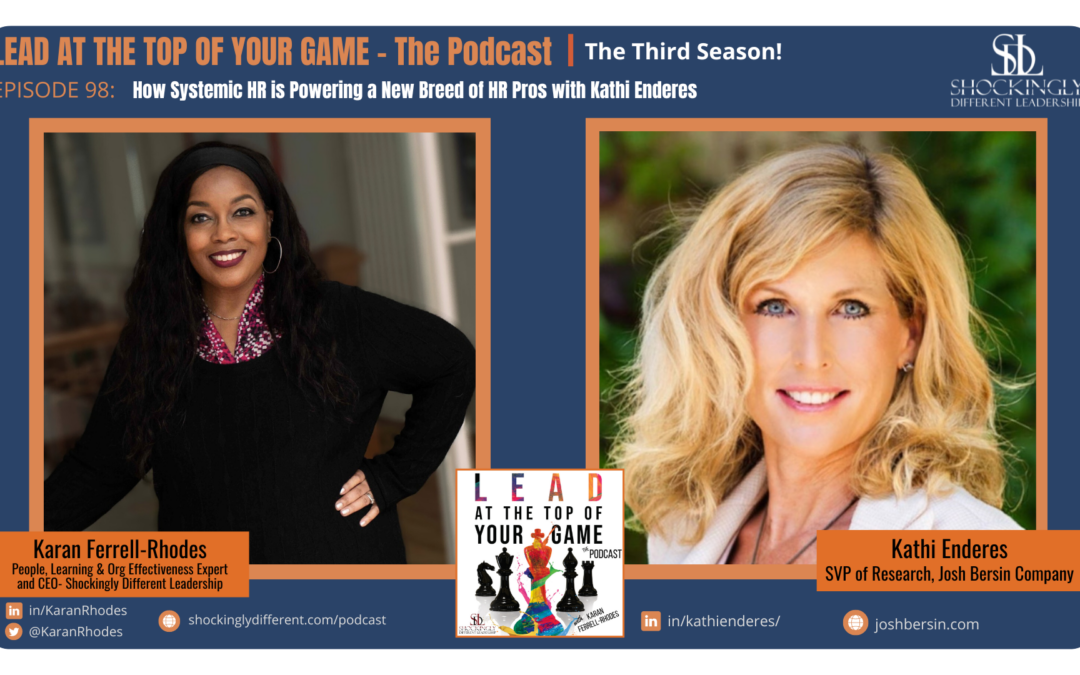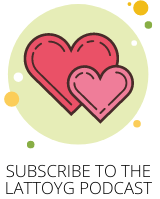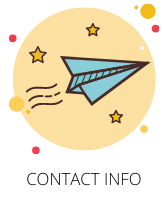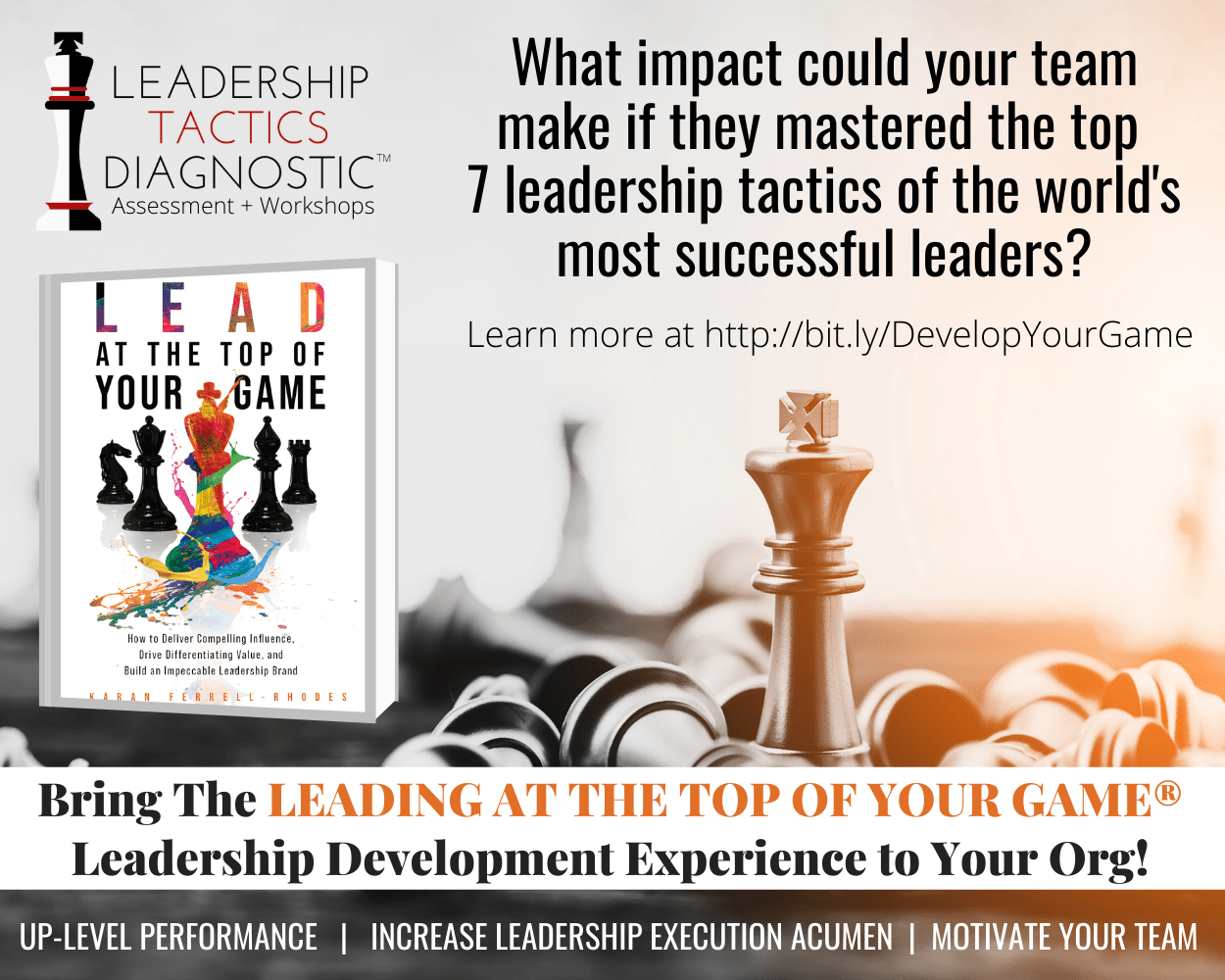IN THIS EPISODE, KARAN FERRELL-RHODES INTERVIEWS KATHI ENDERES.
Human Resources (HR) is transitioning from a typical support function to a strategic partner required for organizational success. As businesses face more complex challenges, HR professionals must adapt by gaining new skills that go beyond basic transactional activities. To generate high organizational performance and improve employee engagement, HR teams must embrace continual learning and upskilling, establishing themselves as significant contributors to the overall company strategy.
Kathi Enderes is the Senior Vice President of Research at the Josh Bersin Company, a leading human capital and talent management authority. With a passion for improving workplace experiences, Kathy spearheads research initiatives to enhance organizational effectiveness and employee engagement. She has extensive global experience in human capital, talent, performance, and change management. She joined us today to talk about the latest research she’d participated in on systemic HR.
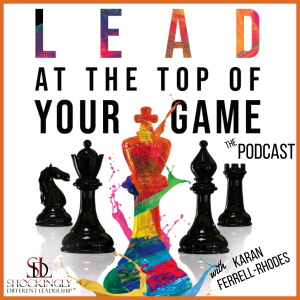
Posted by
SDL Media Team
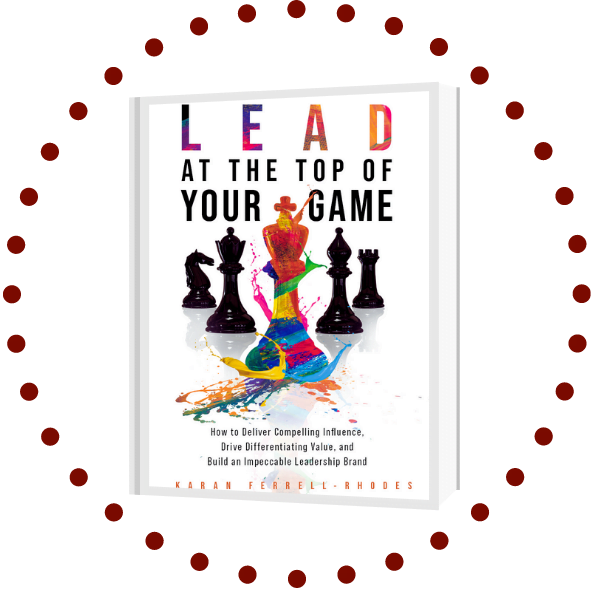
Rather view our video podcast?
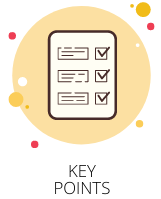
WHAT TO LISTEN FOR:
- What is systemic HR?
- How many different HR skills are listed on LinkedIn, and how has this number changed in the last five years?
- Why is it important for HR to align its success metrics with the business’s overall goals?
- What are the four levels of HR maturity?
- What key challenge do HR professionals face when trying to articulate business problems?
“Only 8% of companies have development programs for HR in their organizations.”
FEATURED TIMESTAMPS:
[03.14] Kathi’s life outside of work.
[04.45] Kathi’s educational background and how she got into research in human capital.
[08.52] Research on systemic HR.
[13.08] Outdated HR operating models.
[17.15] Embracing complexity and strategic transformation in the workforce.
[19.46] The crucial role HR plays in driving organizational success.
[22.43] Navigating the HR maturity journey from transactional compliance to strategic problem-solving.
[27.41] Understanding business problems.
[29.53] The lack of investment in HR development.
[34.33] Signature Segment: Kathi’s LATTOYG Tactics of Choice: Leading with strategic decision making.
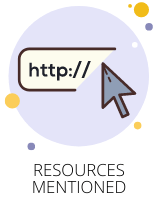
ABOUT KATHI ENDERES:
Kathi Enderes, Senior Vice President of Research at The Josh Bersin Company, is obsessed with making work better. She leads research on how to do just that at the world-leading HR research and consultancy firm, The Josh Bersin Company. She is a senior executive with a combination of global leadership experience in consulting, industry, and research on human capital, work, organizational, and talent approaches.
Kathi has extensive global experience in human capital, talent and performance management, and change management from consulting with IBM, PwC, EY, and Deloitte and industry with McKesson and Kaiser Permanente.
LINKS FOR KATHI:
- Website – joshbersin.com/
- LinkedIn – linkedin.com/in/kathienderes/
ADDITIONAL RESOURCES FOR YOU:
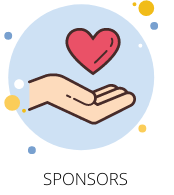
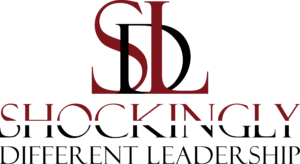
Episode Sponsor
This podcast episode is sponsored by Shockingly Different Leadership (SDL), the leader in on-demand People, Talent Development & Organizational Effectiveness professional services that up-level leader capability and optimize workforces to do their best work.
SDL is the go-to firm companies trust when needing to:
- supplement their in-house HR teams with contract or interim HR experts
- implement leadership development programs that demonstrate an immediate ROI and impact on the business
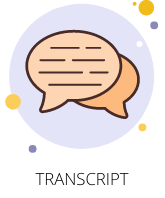
Click the plus button on the tab to access the written transcript:
Episode 98 | How Systemic HR is Powering a New Breed of HR Pros with Kathi Enderes
Kathi Enderes 00:00
So we saw that the most of the organizations are actually not focusing on the right things. So, in other words, most of the HR organizations and the lower levels of maturity measure their success by HR success measures, or even by efficiency success measures, when they should really measure their success by business success measures. So, in other words, the most successful of these systemic HR organizations set out to say, “We are successful if the business is successful.”
Voiceover 00:05
Welcome to the “Lead at the Top of Your Game” podcast, where we equip you to more effectively lead your seat at any employer, business, or industry in which you choose to play. Each week, we help you sharpen your leadership acumen by cracking open the playbooks of dynamic leaders who are doing big things in their professional endeavors. And now, your host, leadership tactics, and organizational development expert, Karan Ferrell-Rhodes.
Karan Rhodes 00:36
Hey there, my superstars, welcome back to another episode of the lead at the top of your game podcast. We are so honored to have you come and join this most exciting episode that features an absolutely outstanding guest that I cannot wait to tell you about. We are so pleased to have on today’s show, Miss Kathi Enderes, who is the Senior Vice President of Research and global industry analyst at the Josh Bersin company. Now, if you are in HR and you don’t know who the Josh Bersin company is, then you are definitely not in the net. You need to definitely look them up. They are world leaders in the human capital space, and just like me, Kathi is absolutely obsessed with making work better for all, and she leads a research on how to do just that. She has extensive global experiences in human capital, talent and Performance Management, change management and other specialties, and has consulted with blockbuster firms like IBM, PwC, ey Deloitte, McKesson and Kaiser Permanente, just to name a few. And as a data research nerd myself, I cannot wait to dig into the insights of her latest research study, or she and her team’s latest research study. So welcome to the podcast. Kathi,
Kathi Enderes 02:08
Thank you so much for having me. Karen. I’m thrilled to be here, looking forward to the conversations.
Karan Rhodes 02:14
I am too. And you know, there’s times like this when we have guests like you, that makes me second guess only having a 30 minute podcast, because I bet we get up for hours, but we’re gonna do use our time together the best we can. But before we dig into the great research that you’ve done, we’d love to learn a little bit more about you personally first. So for as much as you feel comfortable, would you mind giving us just a sneak peek into your life outside of work. Yeah.
Kathi Enderes 02:43
So first of all, maybe I’m a mom of two teenage girls, 13 and 15 year olds, two girls, which is fantastic and keeps me very busy. They are competitive swimmers, so that means very early mornings. And as we just talked about, Karen, I’m not a morning person, so it’s a little bit challenging. Personally, I’m actually an obsessive runner. So I’ve run 41 marathons, full marathons. So I love running. It wouldn’t be me if I don’t run every day. We just talked about too. You’ve seen me skydive the picture of myself on LinkedIn. So I like to do crazy stuff like that too.
Karan Rhodes 03:21
Oh, amazing. I bet it is absolutely fantastic to be your best friend, because it’s probably never a boring day that happens in your world.
Kathi Enderes 03:32
That’s for sure, that’s for sure.
Karan Rhodes 03:36
Wonderful. Well, thank you so much for sharing that, and it it sounds like you have a fantastic family as well. So kudos to you surviving the teenage years. Let me say
Kathi Enderes 03:48
All good so far, but I’m bracing myself.
Karan Rhodes 03:53
Well, let’s jump right in, Kathi, and if you don’t mind, I know you’re doing some fantastic work at the Josh Burson company right now. But can you share a little bit about how you got started into your career, and then how did your love for research, I’m sorry, and in human capital really evolve. We’d love to hear your story
Kathi Enderes 04:15
My story. Well, I have a, maybe a weird, nerdy secret that I’m a PhD in mathematics, so that’s maybe a bad thing to usually don’t like to share that, because people say, Oh my God, what’s wrong with you? But I swear it’s not. I’m a normal person. I can hold the conversation. I studied mathematics and the PhD in mathematics because I wanted to be a professor at University of Vienna, where I’m from. Vienna, Austria. So I’m originally from Austria, trying to guess what the where the accent is from. Somebody told me once, always tell people right away where you’re from, because otherwise they can’t listen to you because they’re trying to listen for the accent. And I’ve experienced that too when I, like, did a presentation, I. Didn’t say, I’m from Austria, and then in the end, I say, any questions, and one person raises their hand and they say, Where you from? That’s the only question I got. I’m from Austria originally, and I wanted to be a professor for at university. But in the last like semesters of my PhD thesis, I realized I looked at all these professors for mathematics, and they were incredibly intelligent, but very detached from reality. And so I said, I’m going to be them. I don’t want to do that. So I decided not to do that. I went into management consulting. So I went to work for Ernst Young back in Austria. In management consulting. Didn’t know anything about business, of course, because I was a mathematician. But then I learned it off. And then at some point, I got into human capital consulting. So HR consulting, I was working on a big spin off from of one company from another, and I was leading the L and D functions spin off of like replicating that and all that. And I thought, well, that’s very interesting. So I got into the HR area. Just stumbled into that, and I never left anymore. So worked there in consulting. Then I worked in as a practitioner leading talent and and organizational effectiveness, and actually people analytics as well, in some large companies, McKesson and Keiser Permanente. And then the opportunity arose to join, actually person by Deloitte at that time to lead research on all of the topics that I’d done, both in consulting and as a practitioner. And I took that opportunity because I’ve led the people analytics team at kaisupamente That did research on employees. And I said, Why don’t I do research on kind of organizations and what makes them effective. And so that was how I got into the research area, and I just loved it, and I still do because I feel we can multiply the impact that we’re making by working with many, many different companies and sharing insights on how to make work better. And that’s my passion and your passion too, Karen. And so I want to make sure that more people can love their job as the way that I love my job. What’s driving me?
Karan Rhodes 07:07
Yeah, and I absolutely as, like I said, as a research nerd myself, I truly appreciate better researchers just like you, because for me, the insights are just absolutely fascinating to the and delivering that information to those in need that will help them increase their engagement, productivity and success in the workplace. I could do for free every day if I didn’t have to pay the light bill every now and then. So
Kathi Enderes 07:39
That I mean, what somebody said to me once in a conference, what do you get paid to do research? I’m like, Yes, I get paid for that. It’s awesome. It’s a dream.
Karan Rhodes 07:52
It is. It definitely is. Well, let’s dive into your latest research study. And, gosh, I don’t even know where to start, but I’m going to let you do so, because I probably won’t do it justice by trying to introduce it. So can you share with our listeners what the research study was all about, and maybe some of the initial why you all chose this particular topic in in particular and then what are some of the insights that came out of it.
Kathi Enderes 08:20
Yeah, so the latest study that we’re talking about, and really our biggest study that we’ve ever done, and also the biggest study actually done on the HR profession overall, we can claim that, and I’ll explain why, was a study that we call systemic HR. So systemic HR is really a different way of operating HR, but it’s not just an operating model. It’s not just like, here’s a new organizational model and operating model. We call this an operating system, and it really changes everything that we do in HR, but then also leadership practices and overall business practices as well. So let me start at the beginning on why we even started researching that. So a couple of years ago, we worked with a lot of HR departments, HR teams of large organizations and help them solve their HR and business problems. And we realized that all the problems that we heard about hybrid work, for example, or developing new leadership capabilities, or, like, how do we deal with the labor shortage? Or how do we build new skills for AI? How do we integrate AI into organizational workflows? How do we organize for success? How do we foster diversity equity, including all of these topics that we came to, to our mind and to our desk, basically, as we were talking with organizations, are really not single domain, like problems. So if you think, for example, any of these problems take like leadership development, for example, building a new generation of leaders, more human, centered leaders that we need now in this. This moment in time with AI coming in, because AI can take the non human things, but we need to be more human, not less human, right? Pick that, for example. Well, this is not just the learning and development team’s opportunity to build leaders right, like, who is, who is accountable for that? Well, recruiting has a part in it, because who you hire into the organization actually, like basically dictates who you can how you can develop people. If you hire the wrong people in that are not aligned with your values, with your with how that organization operates, well, then you all the development won’t work. So recruiting has a part in it. Of course, retention has a part in it too. What experience we create for these leaders has a big part in that too, because you might hire the rich people, but then they might look at around and say, Well, this is not how where I want to work. I can’t speak up. Nobody’s listening to me. Maybe my perspectives are not valued. I’m going to lead right away again. And that certainly happens when you think about people lower down in the organization, for example, when you hire aspiring leaders, but then you then let them, like flourish and grow and all of that, well, they’re going to look around and say, I’m going to leave you again. So employee experience, how you reward them, of course, matters to that too, right? What you recognize? What do you reward for? So that’s also part of leadership development, how you of course, how you build leaders, how you train them, what mentors they have, what connections they have, what training programs they go to. So learning development, leadership development, of course, plays a role in that too. But then also, how do you organize things? How do you set up the jobs of the leader to begin with, you’re very hierarchical, or do you have teams that work together in new ways? So organization design, Organization Effectiveness, all of these kind of disciplines have to work together. And that goes through any of these problems that we talked about. Pick any of them. I picked the leadership development, but any of the problems like you think about retention of people, skill building new hybrid work models, any of those are not single domain problems. So we said all the problems are interconnected, but most of the HR organizations are actually very specialized in silos. So you have the recruiting team that does recruiting, where you have the learning and development team that does training and learning and development. You have the total rewards team that just looks for compensation and benefits. You have the employee experience team that looks for like the experience that people have. You have diversity, equity, inclusion team that looks out for that. You have talent management that just looks for talent like performance management. So all of these kind of silos that we’ve created don’t serve us all that well anymore, and most, that’s how most organizations operate, right? And so we have set up, maybe really 30 years ago. We’ve set up these HR operating models that drive us to be very siloed in our operations, and we really just work off problems. We call it like operating like the 80s. IT department where somebody just called in, right? And they call in a problem, and then we say, Okay, let me work off that ticket, and we work it through the funnel, and then that ticket is gone. And we can, can we want to go back to doing what we’re doing for on to the next thing? But really that doesn’t work anymore, because such big problems come to HR, right? I mean, especially since the pandemic, HR is right at the center everything that we do in the organization, and that the most important strategic partner to the CEO for many organizations now is the theater role, because, because most of the CEOs say, actually, the problems that keep them up at night is talent. It’s continuous transformation of the organization. It’s organizational effectiveness. Is hiring the right people, it’s having the right skills, adoption of AI. All of those things are talent problems, right? They are HR problems. And so now we are in this state where we have to rethink how we operate. The HR function in a completely different way. So we started out to set out, and they actually took us two years to study this, because we did many things we did really got four different inputs, and that’s where that like being the biggest study comes in. So first input that we did is we did a massive study of over 100 HR and management practices of over 1000 organizations globally. So we asked the organizations all these things on, how do you set your HR strategies? How do you develop kind of your people strategy? How do you align it to the business strategy? How do you operate? What roles do you have in HR? What skills do you have in HR? How do you like define, basically, accountabilities. What’s the accountabilities of leaders? Where does the CHRO sit on the C suite? All of those kind of questions, What technologies do you use as well? So we asked lots and lots of different questions. And then we also interviewed over 30 theater rose, very large, successful companies around the globe that we thought they have. Probably something to share, and we got some like validation and case studies on that. So that was one thing. The second thing that we fed into that was all about 15 domain studies. So we’ve studied over the years all of the domains we’ve studied, talent acquisition, we started total rewards, learning and development, on and on and on. We fed all of those insights into that study as well. Then the third input that we have is we have an HR capability model and framework where over 9000 HR people have self assessed themselves against 96 HR capabilities. And so we’ve had the insights on what are HR people good at, what are they not good at? Where should they be good at? What are the most different capabilities? We also fed that into that study. And the last input that we had is we worked with LinkedIn to get actually, the profiles of 7.5 million HR peoples into that people into that study as well. So 7.5 million HR people on LinkedIn. Just let that sink in. So there’s 7.5 million HR people just on LinkedIn. And if you want to calculate how many people in the world in in the HR profession, it’s probably like three times this much. Not everybody’s on LinkedIn. There’s whole countries that don’t use LinkedIn. I don’t think China uses LinkedIn. Country, obviously. So. So if you think about how many HR people are there out in the world, it’s probably like 2122 23 5 million HR people. So it’s a really big profession, and LinkedIn
Karan Rhodes 16:36
And I’m honored to be one of those, Kathy, so maybe my input is in your research,
Kathi Enderes 16:43
Your profile definitely is because if you’re on LinkedIn, we pulled all of the the like profiles and all of the insights from there’s actually 400 different HR skills that are on LinkedIn of HR professionals, and that has increased by a third in the last five years. So that’s getting more and more skills, because the profession is getting more complex, and the problems that we’re addressing is getting more and more strategic, but also more complex. So 400 skills, there’s 250 different HR jobs in LinkedIn, 250 different jobs like that thinking. So it’s pretty and that has increased by a quarter as well over the last five years. So also, because the profession is getting more and more complex, there’s just different more different jobs. There’s new jobs that were not even jobs before, like now you see jobs like aI trainers or something like that, and like generally bi kind of HR trainers and all of that. But I also see things like, of course, product managers, like product managers for HR products, right? That wasn’t the case maybe 10 years ago. We’re not thinking about HR solutions as products, so all of those new jobs are coming in as well. So that’s kind of how we get started and
Karan Rhodes 17:59
So, now, out of all of that data, I mean, what? What were some of the learnings that you found out of that? I mean, that is just a tremendous data set to start with, and you had a lot of insights that came out of that. So can you share a few of those with us?
Kathi Enderes 18:14
Of course, of course. Yeah. So the first thing that we want you to see is how, like what to is the model, and that the approach that we have today, is it actually working? And we saw no, it’s not working for most organizations. It’s not it’s not addressing the business problems that companies have to address. So we created this four level maturity model, and if you follow us, you’ve seen them where we create these four level maturity model, where we bucket all of the companies into into kind of four levels of maturity, with level one the least impactful, and level four the most impactful. And when we say impactful, we don’t just think about HR or people impact. We also think about business impact, so financial performance, customer delight, and also innovation and kind of change adaptability. So we want to see balanced impact, and we show all of this impact by kind of correlation, and seeing what of the HR practices that organizations can do actually correlate most with impact. So we saw that the most of the organizations are actually not focusing on the right things. So in other words, most of the HR organizations and the lower levels of maturity measure their success by HR success measures, or even by efficiency success measures, when they should really measure their success by business success measures. So in other words, the most successful these systemic HR organizations set out to say we are successful. If the business is successful, we’re not just successful. If it costs less money to operate HR services, or we have good time to appeal in recruiting or something like that. We are measuring our success by the business accomplishing what the business has to accomplish, very different orientation. So yeah, for example, like New York Presbyterian, very large healthcare system in New York, they told us the story that how they measure their HR success is by the business accomplishing the three things that the business sets out to do. And so their business sets out to do, be more digitally oriented, to expand their footprint and to provide better care to more people, kind of in the New York area. So those are their three business success measures. And HR the theater. Row Sean Smith, he told me that I’m only counting us to be successful if we accomplish that for the business. So if we help the business with the people, of course, that we have to expand the footprint, to be more digitally, like digitally basically oriented, and to provide better, cheaper care to more people in the New York area. Very different approach, and saying, Well, we just measure our retention rates. Retention rates Exactly. Retention rates are like how satisfied people are with the tickets that we work off like the IT service department of the 80s, right? That’s, that’s all nice and good. But if the business is not successful, what is HR doing? And then you can’t have kind of a business…
Karan Rhodes 21:09
Can I ask you a quick question about that?
Kathi Enderes 21:11
Yeah…
Karan Rhodes 21:12
So what is fascinating, and I give you, you know, a virtual high five, is that I can see where all of this is true. Your data is true, but what I found in our research is that there are very few overstaffed HR functions, right, if any one yet. So I’m just curious if your executives or leaders that you all interviewed had any insights on how they’re trying to be more strategic, or use their internal talent, or maybe external consultants helping them to use their time better, to better address some of these business needs that are a lot more meaty than just like processing payroll, right? If you’re really That’s correct business metrics, you’re dealing with some major strategies, change management efforts, innovation, absolutely, they may not have all the talent to do. So did you get any insights by chance on any of that?
Kathi Enderes 22:11
Yeah, absolutely. And it’s really a journey. So if I think about the journey going through like from level one to level four, you gotta build on, of course, you’re going to, like, basically, process payroll, right? If people are not paid, well, all the other strategic stuff won’t matter, because you can’t pay people right, exactly. You don’t have a place to even be strategic. So of course, you’re going to build on what we call Level One, transactional compliance, where HR really just looks at the nuts and bolts and say we need to process payroll and we need to hire some people and give people some benefits, that kind of thing. Technology can really help, of course. So most organizations, when they’re trying to move from this level one, what we call transactional compliance, and by the way, there’s almost 40, 40% of organizations that are still at that level of HR, operating more like a cost center, yeah, almost 40% 39% they go through what they call an HR transformation. And the HR transformation, I’ve worked on many of them as well in my consulting career, goes like this. Usually, consulting company comes to you like a big consulting company comes to you and say, you should implement a technology like Workday or Oracle SAP, the HCM technology to streamline all of this transactional stuff, to make sure payroll gets done well, but then also to make sure your recurring gets done more efficiently and your compensation gets processed better. And can have some manager self service. You can have to some Employee Self Service, and that’s all great. And then they implement one of these systems, which is totally necessary, of course, but it really doesn’t transform the HR function, of course, it just streamlines operations. And that’s necessary, but not sufficient. So then you have this, what we call Level two, this efficient service delivery kind of support process, where HR operates like a support function. So it’s not a business function, yet, it’s a support function, and that’s really, really important. Technology can really help with that, obviously, that you don’t have to have all these people doing duplicative work and all of that and making sure that things get processed faster, smoother and better and cheaper and all of that, usually at that time, then the complaints about HR stop coming in, because at level one has lots of complaints, usually because lots of duplication, and nobody knows what anybody’s doing when you go to, I mean, it’s, it’s kind of and then at this level two, efficient service delivery model. It’s the typical HR service delivery model that we’ve had, by the way, since 1995 when we had this introduced this tier service delivery model where you have technology as the lowest tier, basically of processing stuff. Then you say, well, we have a call center, a service center that takes the next level of efficiency, and then we have all these centers of excellence, the recruiting center of excellent learning, total rewards, on and on. And then on top. Of that, we have HR business partners that presumably should work with the business on kind of more strategic stuff, but most of the time, if you mentioned it too, they don’t have time for that, because there’s lots still to be done, because managers don’t really know, how am I going to put the requisition into the system? Or how do I deal with an employee situation that always comes an employee that always comes in later. How do I do kind of put that transfer into the system, or any of those kind of things? Well, at that time, like at this level too. Then organizations look at all these problems that they are supporting, and they say, maybe we need to bring in cross domain solutions. So these products, like an onboarding for example, is a great example, right? Onboarding is, of course, by its definition, it’s very, very cross domain focused, and so they say, Maybe we should bring in a product manager for the onboarding solution that works across all these centers of excellence, also works with HR business partners and streamlines that and manages an end to end. And that’s already a huge jump. And usually actually you don’t need more people. You need less people if you do it well. But so it’s and level four, where you really, what we call fall in love with the problems. We really deeply first understand what the problems they really are that you want to solve for. Quantify them. Use data and analytics to really understand which ones are the most important business problems, not HR problems, and then bringing teams to support them, that’s kind of the most that systemic HR.
Karan Rhodes 26:32
And so do you have consulting teams that help guide companies through all of these four levels?
Kathi Enderes 26:39
Yeah,
Karan Rhodes 26:39
So this long term partnership that you’re looking when a company embraces the systemic HR model?
Kathi Enderes 26:46
Exactly. And we do that, we help. It’s not that we put just a research report out and then we say, Oh, we done with it, and good luck with it,
Karan Rhodes 26:54
Right.
Kathi Enderes 26:54
Because, I mean, there’s so many things, of course, you listen to this, and as you listen to this, and also, if you read this big report that we’ve written, you probably have more questions than answers, right? You’ll say, Wow, this sounds so interesting. But how do I
Karan Rhodes 27:07
How do I make it real for us, right?
Kathi Enderes 27:09
How do I make it real? Exactly. How do I fall in love with the problem? How do I get the data? How do I prioritize? How do I bring together cross functional business teams and consulting teams within HR, and how do I help them, like, come together really quickly, solve the business problems. What is even a business problem? How do you understand a business problem? And by the way, this is one of the hardest things for HR people to articulate. What are your business problems? Like? We just did a workshop yesterday with a very large consumer products company, and we asked them, What are your biggest business problems? And all the problems we heard were HR problems. We are like, we’re trying to set up our land processes. Was trying to streamline our performance management. Well, that’s not a business problem. What is the business problem that you’re trying to solve with that?
Karan Rhodes 27:57
But in all fairness, though, Kathi, you know, I don’t think that most HR professionals were either taught or learned how to think, to your point, as problems, as business problems. I mean, they would listen to their business colleagues and executives, but it’s a skill or muscle that we definitely need to build as an HR community, in my humble opinion, if I could
Kathi Enderes 28:23
Oh, I absolutely right. I mean, as we looked into how do you actually do that, the capabilities of the HR people is a huge factor in all of this. So how do we help? Because you can say, well, here’s your new role, but you don’t know how to do this new role, right? You can say, well, you’re now a business consultant. And people say, Well, I don’t know what that means, and I don’t know how to understand the business problems. I don’t know consulting skills. Yeah, I don’t I’ve never done it before. So of course, we need to up level and upskill the HR capabilities that every HR person has, to help them be more business savvy, to help them with consulting skills to help them coach leaders and managers, redesign the organization, help them with fostering change at reality and the organization, all of those kind of skills that we realized through our data and through our insights that actually drive high organizational performance and high employee engagement and A great employee experience. So yeah, the skill building and meanwhile, actually only 8% of organizations actually have even any HR development program in their organization, so that everybody has has a program. We talked with a very large consulting company, and they said we spent $5,000 on client facing consultants. And we said, well, that’s great on their development, right? And so they get $5,000 a year worth of development. And we said, how much do you spend on HR people? And guess how much they spend on HR people a year. So they spend 5000 a year on
Karan Rhodes 29:57
500?
Kathi Enderes 29:57
You got it exactly right. 500 a 10th. You got it right.
Karan Rhodes 30:00
I’m sad that was right. But, yeah, that was gonna be my guess.
Kathi Enderes 30:05
I’m happy that you got it right, but then also sad you got it right. $500
Karan Rhodes 30:09
Pennies! Pennies.
Kathi Enderes 30:09
so a 10th of that they spent like hardly anything. And how can if each other is the most important business function now, how can they be like the business consultants to support the business. If you’re not like supporting their development, that’s a problem.
Karan Rhodes 30:26
Absolutely.
Kathi Enderes 30:26
Yeah. So developing the HR profession is a huge opportunity, and development of course means learning courses, but and we have a the draft person Academy, where people can can go in there and learn together, and it’s cohort based, and it’s great, but then also learning real projects, right? Project assignments. If I’m a an HR business partner and I want to learn more about a project in another area that I’m not working in, maybe I can work on a project there. Maybe I can be the project lead for the new onboarding project. Maybe I can kind of work on leadership development as well as the building this. These capabilities, not just through formal education, but then also through project work, finding mentors. Huge opportunity doesn’t cost anything. Right doesn’t cost anything.
Karan Rhodes 31:11
We just need to give them the opportunity right to
Kathi Enderes 31:17
Exactly, it doesn’t cost anything. And usually, like project opportunities is the most underutilized opportunity of all, because not only does it get you kind of the the work done that you might otherwise outsource, maybe to consultants, right? Why don’t you have your internal people working on projects
Karan Rhodes 31:36
And let them run with that…
Kathi Enderes 31:37
Teach them, let them grow with that so and it also creates community. It creates cross company connections, all of that great thing, like rotating people around rotations, a huge other, other underutilized opportunity, where you basically can say, well, how do we rotate people? Maybe even within HR, but even outside of HR. That’s right, rotating people into the business and from the business into HR. We talked with Lego, for example, and they have their seats roll. Lawrence Schuster, he doesn’t come from the HR profession. He used to be in marketing Google, and then he used to run operational units at Lego. And so he is a very business savvy and business focused person. And he rotates people all the time within each other and also outside of each other. So his recruiters maybe into sales, and he brings some of the IT people into people analytics.
Karan Rhodes 32:32
And that’s how they learn!
Kathi Enderes 32:34
And that’s how they learn, and that’s what they how they bring also their knowledge into the organization.
Karan Rhodes 32:39
I know…
Kathi Enderes 32:40
So lots to do, lots of things to do, basically, systemically, exactly
Karan Rhodes 32:47
I knew we were gonna run out of time, didn’t I say we needed an hour?
Kathi Enderes 32:55
Yeah, I would keep going before I myself.
Karan Rhodes 32:58
Oh my gosh. You know what? There’s only one solve for this. We got to have you back if you ever have a extra time, because there’s, I know, a ton more that we can talk about.
Kathi Enderes 33:06
There’s lots more to talk about, for sure.
Karan Rhodes 33:09
Well, before we let you know, as you know, we love to ask our guests their perspectives on some of the research that we’ve done here at SDL. And before the show, you were so kind enough to share with us that we you know, as you all know, we did research on leadership execution, and we love to ask which of the tactics that are universal, no matter your profession or industry, really jumped out for you, and you were so kind enough to share that leading with strategic decision making really resonated with you and for our new listeners out there, leading with strategic decision making is all about making great decisions yourself as a leader, or leading a fantastic decision making process with your team or your colleagues. So curious minds want to know Kathi, why did leading with strategic decision making really resonate for you?
Kathi Enderes 34:01
Yeah. I mean, one thing that really talked about just right now, about the systemic HR study that we had done, is being aligned to strategy. Is the most important thing for the HR function to make sure that you aligned with the business strategy. We talked about how you, for example, need to measure your success of the HR function by the business success, not by the HR success alone. So being aligned to the strategy of what you want to do, either strategically as an organization, or what you want to accomplish with your initiative, always asking the why. It goes back to my training as a consultant early on, where they told Tatas to ask why five times to get to the bottom of the problem. So all of that has to do with strategic decision making. And I think the decision making is key, because decision making means knowing what to say yes to, but also what to say no to, and that’s the hardest thing that we always have to wrestle with with. Too. It’s always want to do more with less. I always feel we need to do less with less. We need to do less right. What comes off the plate? What are we not going to do? What are we going to say no to, and de prioritize so we can give our best to the things that we say yes to. So that’s all part of leading with strategic decision making.
Karan Rhodes 35:20
Oh, I love that. Can I tell you, I’m really shedding tear that we have to close now, but, but you have been absolutely fantastic. Kathy, kudos on this fantastic research study. We’re going to have a ton of information in our show notes about it, but I’d like to give you just a few seconds to give voice to where people can find you more about the study and more about your consulting teams that can potentially help them if they’re interested in implementing systemic HR in their organizations.
Kathi Enderes 35:52
Yeah, thanks for that, Karan. So yeah, connect with me on LinkedIn. Of course, I’d love to have with anybody I have the connection on LinkedIn, so you can find me under my name, Kathy Enderes on LinkedIn, pretty easy, all of our services and our support materials on our site, jarsperson.com that we also have information on how to become a corporate member. So we help our corporate members who can take advantage of all the research that we take we do, as well as our advisory supports for systemic HR and everything else that you would might need help in with the HR function, or with anything like leadership development, HR learning and development, all of those kind of areas of things. We also have lots of insights on the HR technology area, which is a huge enabler I mentioned before for systemic HR, you can’t really do any of this with without forward looking kind of AI based HR technology as well.
Karan Rhodes 36:50
Absolutely. Fantastic. Well, thank you so much, Kathy for the gift of your time and sharing the insights that came out your research. We are so thrilled that you took the time to spend with us today, because there was so much information and gems that you shared. We really appreciate it.
Kathi Enderes 37:07
Thank you so much for having me. Karan, it was a pleasure, and I’d love to connect maybe again soon. Oh, absolutely. Let’s do it.
Karan Rhodes 37:14
Let’s do it. And thank you to listeners for the gift of your time as well. We know there are literally a million other podcasts that you could be listening to at this time. So we do not take your followership lightly. We just love to bring fantastic and innovative guests like Kathy to you. So all that, we ask that you please be sure to like and subscribe to the podcast and just share with one friend, so that all of us together can get smarter about leading at the top of our game. Thanks so much. And see you next week, And that’s our show for today. Thank you for listening to the lead at the top of your game podcast, where we help you lead your seat at any employer, business, or industry in which you choose to play. You can check out the show notes, additional episodes, and bonus resources, and also submit guest recommendations on our website at leadyourgamepodcast.com. You can follow me on Twitter, Facebook, Instagram, and LinkedIn by searching for the name Karan Rhodes with Karan being spelled K a r a n. And if you like the show, the greatest gift you can give would be to subscribe and leave a rating on your podcast platform of choice. This podcast has been a production of Shockingly Different Leadership, a global consultancy which helps organizations execute their people, talent development, and organizational effectiveness initiatives on an on-demand, project, or contract basis. Huge thanks to our production and editing team for a job well done. Goodbye for now.
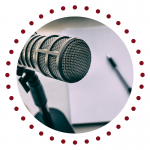
Want to be a LATTOYG Podcast Guest?
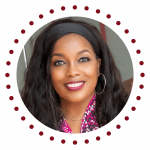
Want Karan to be Your Podcast Guest?

Want to be a Podcast Sponsor/Advertiser?
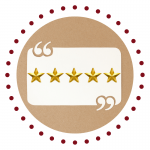
Like the Show? Please Leave a Review
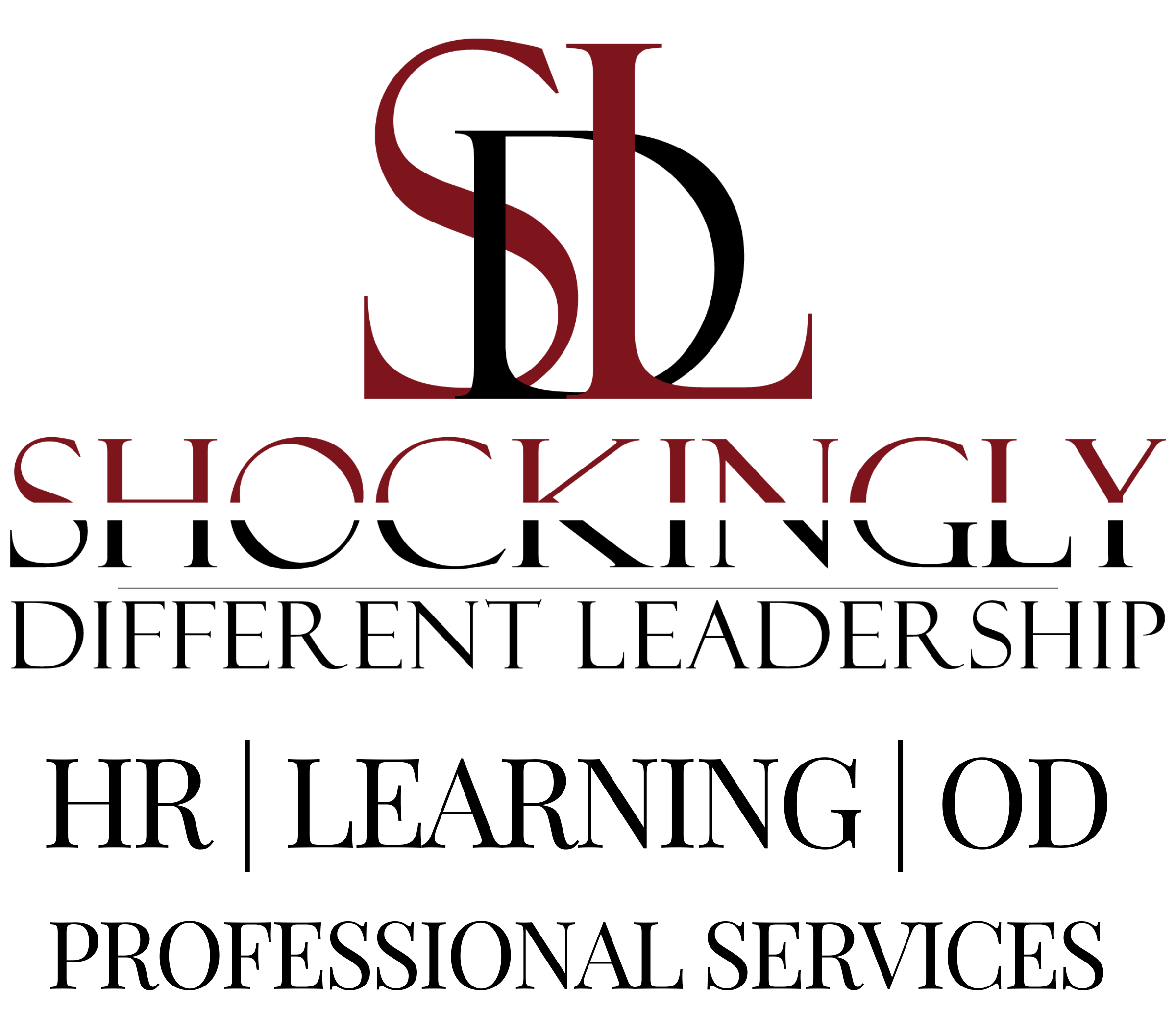
#KeepInTouch
via our podcast alerts
Subscribe now to discover why thousands of monthly listeners who are passionate about doing their best work prioritize time each week to listen to the Lead at the Top of Your Game podcast.
#AboutSDL
Shockingly Different Leadership is a human capital professional services consultancy that provides organizations access to the best consulting expertise in the areas of Talent Development, Organizational Development, and Human Resources – on an on-demand, project, or contract basis.
#WhereToFindUs
MAILING
4480-H South Cobb Drive
PMB 219
Smyrna, GA 30080
PHYSICAL
2121 NewMarket Parkway
Ste. 108
Marietta, GA 30067
#ContactOptions
Customer Service Email:
service@shockinglydifferent.com
Call or Text:
770-384-1103
#Office Hours
MON-FRI
8:30 AM – 6:30 PM
Weekends By Appointment

